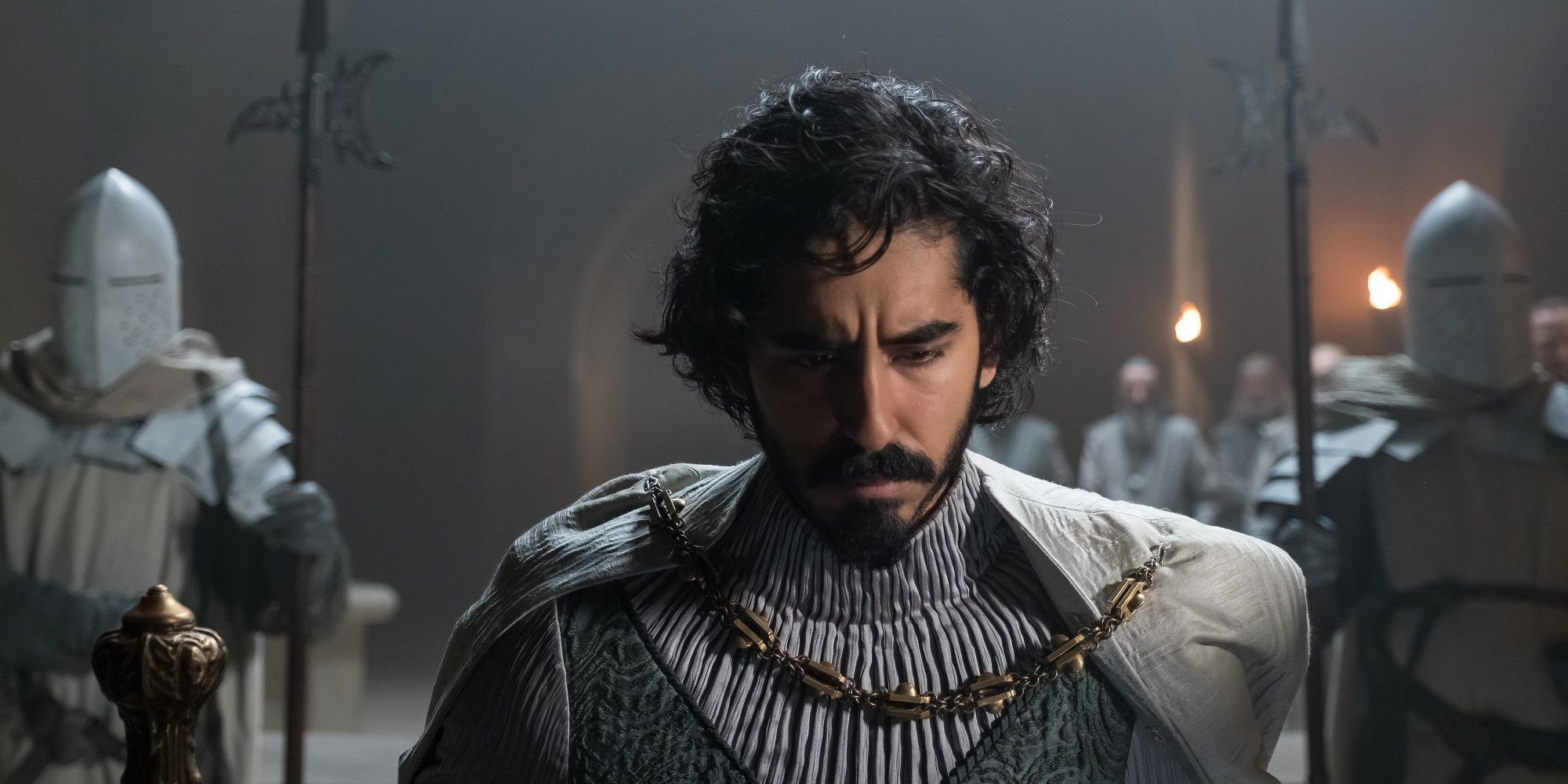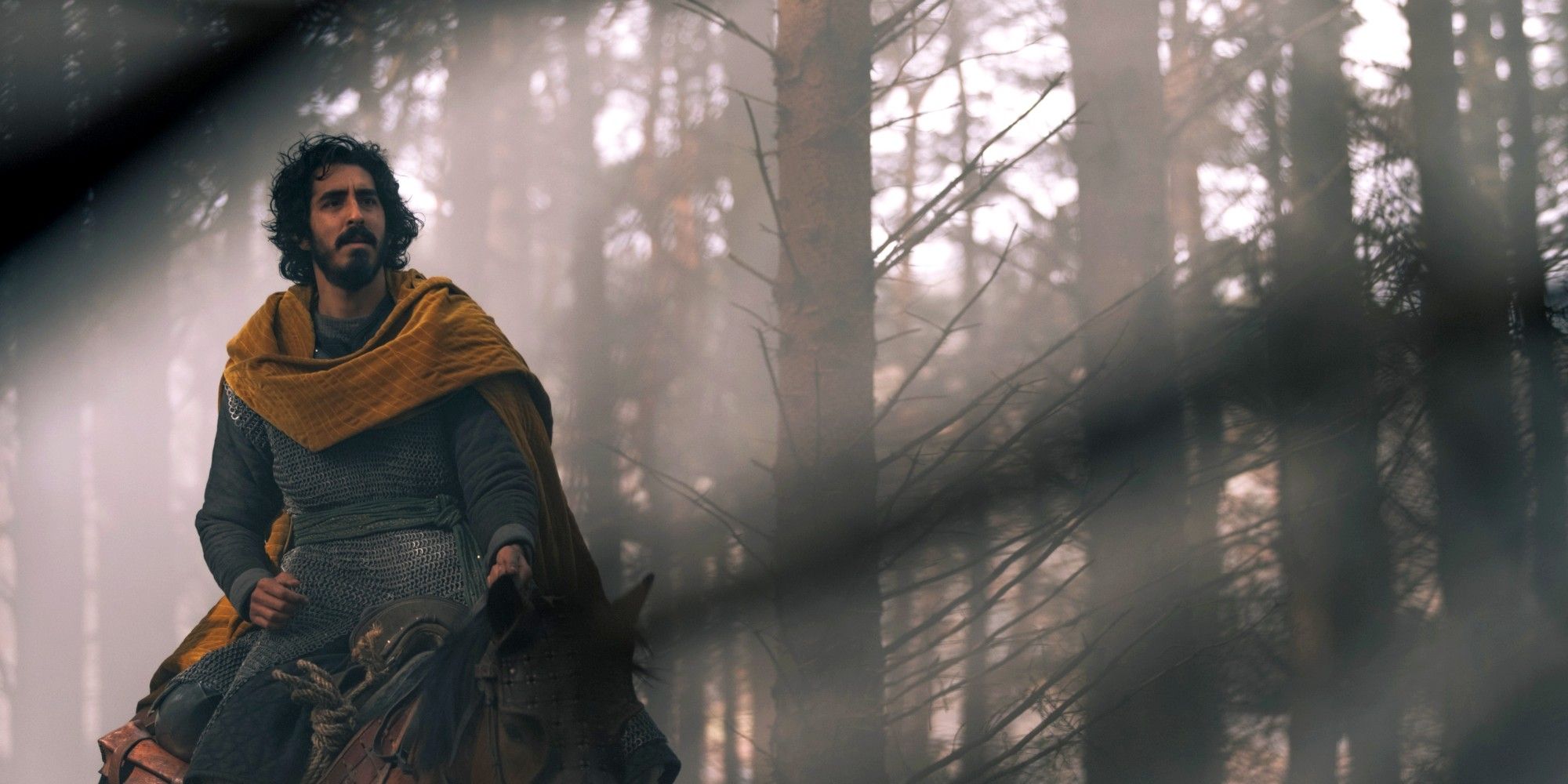The Green Knight's director, David Lowery, has opened up about which five films greatly inspired his reimagining of the 14th century Arthurian legend, Sir Gawain and the Green Knight. The Green Knight tells the story of King Arthur's head-strong nephew Gawain (Dev Patel) as he undertakes a quest to confront the titular Green Knight, here presented as a gigantic tree-like creature portrayed by Ralph Ineson. The story is perhaps one of the most well-known Arthurian legends and has been adapted to screen numerous times over the years, with Lowery striving to create something wholly different with his adaptation.
Lowery previously directed The Old Man and the Gun and A Ghost Story, both of which were critically acclaimed upon their release. Both showed a great deal of craft and care from the director, as well as clearly wearing the director's influences on their sleeves. This craft and care has continued with The Green Knight as Lowery spent six months re-editing the final cut of the film during the pandemic, while its release was delayed, in order to better match his vision.
Speaking as a part of Alamo Drafthouse's Guest Selects program, Lowery revealed an eclectic assortment of films that were "essential inspirations during the planning and production of The Green Knight". As reported by CinemaBlend, Lowery cited The Dark Crystal, Bram Stoker's Dracula, The Passion Of Joan Of Arc, Marie Antoinette, and Willow as key influences that he kept in mind while making the film. With some of these, it's easy to see where Lowery drew his inspiration. He cited that much of his cinematography used in The Green Knight drawn from Joan of Arc. He noted that the 1928 film used "incredible sets of medieval France … yet [Carl Theodore Dreyer] chose to largely ignore them until the climax of the film, and to tell the story entirely in close-ups", something that he chose to emulate. Likewise with Dark Crystal he stated that the film captured the "sense of what it means to go on a quest … to set out into parts unknown" which similarly wanted to depict as Gawain undertakes his journey.
Bram Stoker's Dracula: "The film is incredible on a visual level, the incredible production design by Thomas E. Sanders and the costume designed by Eiko Ishioka are striking from the onset, but even more impressive is the techniques that Coppola used to tell the story. He really just used everything and the kitchen sink and threw it all in a blender to make what I think is one of the most technically accomplished films of his entire career."
The Dark Crystal: "The film is incredible on a visual level, the incredible production design by Thomas E. Sanders and the costume designed by Eiko Ishioka are striking from the onset, but even more impressive is the techniques that Coppola used to tell the story. He really just used everything and the kitchen sink and threw it all in a blender to make what I think is one of the most technically accomplished films of his entire career."
The Passion of Joan of Arc: "One of the bits of trivia that I love about this movie is that they built these incredible sets of medieval France – no expense was spared in building the sets for this film, and yet Dreyer chose to largely ignore them until the climax of the film, and to tell the story entirely in close-ups. And these close-ups are like no close-ups you've ever seen in cinema. And when we were making The Green Knight, I often took comfort by the fact that we had built these giant sets ourselves and were shooting in incredible locations in Ireland, that ultimately what I needed to do was to get the camera as close to the actor's face as possible and watch the emotion that was trickling across their visages."
Marie Antoinette: "I used this movie not so much as a point of inspiration on an aesthetic level, but as a reminder, that when you are dealing with history, when you are dealing with the largess of history, that more important than being historically accurate is being emotionally true. And that is something we carry with us when we were making The Green Knight, and it's one of the things I love the most about what Sofia Coppola did with Marie Antoinette."
Willow: "When I first set out to make The Green Knight, one of the progenitors of the entire film was I found all of my old Willow action figures in a box in my closet. And I pulled them out and thought to myself that it would be fun to make a fantasy film like Willow. And here I am two years, three years later having made one. The Green Knight is not exactly like Willow, but it's got some of the same DNA there, and I like to think that there's a little bit of kinship between the two."
Others are a bit more unconventional, in particular Sofia Coppola's Marie Antionette. The director didn't state it was an inspiration on an aesthetic level, but he praised the how film's "anachronisms fall away." For Lowery, the film served as a "a reminder, that …when you are dealing with the largess of history, that more important than being historically accurate is being emotionally true." This sense of emotional truth is something that certainly comes across in The Green Knight, especially in the tone of the director's darker, somewhat more horror-orientated take on the classic Arthurian legend.
The inspirations certainly appear to have helped Lowery craft a visually stunning film. Early reviews for The Green Knight have been overwhelmingly positive, praising Lowery's cinematography and spectacular visuals, as well as its dark and otherworldly tone that reshapes an otherwise familiar tale into something wholly unique. Clearly, Lowery has taken the best qualities of each the films he cited as influences and coupled them with his own masterful storytelling to create a truly cinematic feast. Audiences can judge for themselves however as The Green Knight is out now in theaters.
Sources: Alamo Drafthouse; CinemaBlend


